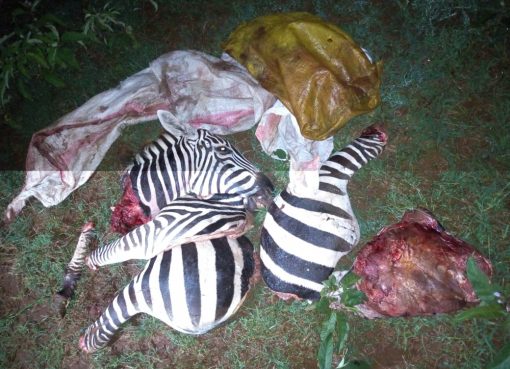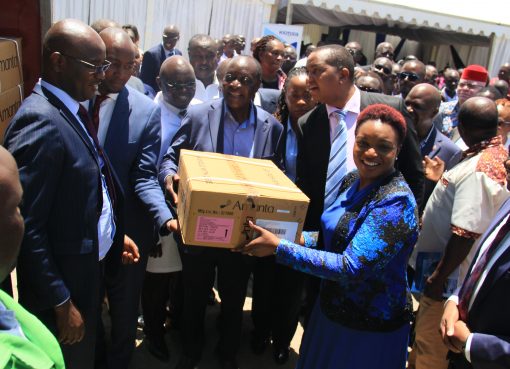The construction of Thwake Dam, a Vision 2030 flagship project estimated to cost Sh. 63 billion, will spur socio-economic development and ease perennial water shortage in Kitui.
The dam, which was first proposed for construction in 1953 during the colonial days and again in the 1980s but whose construction aborted, is set to start construction soon since compensation for families within its catchment area has been finalised.
It will be implemented in four main phases that include, construction of a 77 metre high dam, hydro power generation, 34,600 cubic meters of water supply and a final phase of irrigating 40,000 hectares in Makueni and Kitui counties.
According to the National Environment Management Authority (NEMA) environmental impact assessment report, the dam is designed to supply piped water for domestic use, serve the Konza techno city and adjacent towns, irrigate farms downstream in the two counties as well as generate 23 megawatts of hydro power.
The multipurpose dam is a project under the Tanathi Water Services Board (TAWSB) and entails harnessing of the fluctuating flows of the Athi River and the seasonal water from Thwake River.
During a recent visit to the site, Water Cabinet Secretary (CS), Simon Chelugui said that the dam will provide water supply for domestic, livestock, irrigation, hydropower and even industrial activities in the beneficiary districts.
“It will largely serve areas in Makueni and neighbouring districts but also certain parts of Kitui based on topography,’ said Chelugui.
The current access to clean water in Kenya is estimated at 90% in urban areas and 44% in the rural areas while the national average stands at 57%. At the same time provision for safe sanitation stands at a national average of 80% (95% urban and 77% rural).
The Thwake Multipurpose Dam was identified by TANATHI Water Services Board (TAWSB) as a strategic facility to supply water to the semi-arid region.
Following feasibility studies covering the entire Makueni and Kitui Counties, it was established that water is a priority to all the residents in terms of livelihoods and social requirements. The overall ecosystem will also get transformed for the benefit of the communities.
The dam is proposed to be located immediately downstream from the confluence of Athi and Thwake rivers in Makueni and Kitui.
The proposed dam will cover an area of approximately 2,900ha spanning Makueni, Machakos and Kitui with a catchment area spanning about 10,276 square kilometers reaching as far as the Ngong hills, Kikuyu escarpments and the lower reaches of the Aberdares.
On her part, Kitui Governor, Charity Ngilu observed that the proposed dam is a necessary intervention that will address water scarcity and in turn open up the area for development and improve the socio economic status of the areas involved.
“The dam will open up the area for development in terms of activities such as fishing, tourism and the fact that the dam axis may provide a causeway that will open up the area by providing social and economic access between Makueni and Kitui Counties,’ said Ngilu.
She affirmed that the overall ecosystem of the project area stands to get transformed to the benefit of the communities.
Further, the multi-billion dam project straddling the two counties is set to unlock the agribusiness potential in the area and will directly impact more than 100,000 households.
The dam, expected to be twice the size of Masinga dam, will hold up to three million cubic metres of water.
The project will be jointly funded by the government of Kenya and the African Development Bank (AFDB) on 65 per cent and 35 per cent venture agreements respectively.
Upon completion apart from solving the clean water challenge for residents, it will also open up the area for agribusiness through irrigation and also generate electricity.
In a bid to facilitate the relocation of the affected households, the government has set aside Sh.2.9 billion as compensation with those on the dam footprint getting first priority.
The first phase of the project which will cost Sh.30 billion, will be directed at connecting households to clean water while the second phase will focus on irrigation to boost agribusiness.
The third and last phase of the project will involve generation of hydropower where it is expected that the dam will contribute 20 Mega Watts to the national grid.
Amid complaints from area Governors over the sharing of resources such as supplies of materials, the Water CS disclosed that the government has developed strict guidelines that will guide project execution by ensuring that it is big on local content and local supplies-depended so that it creates real economic impact.
The guidelines, according to Chelugui, will ensure that 30 per cent of the materials have to be from the local areas which will translate to 8,000 jobs for the youth and women.
In addition, the project will benefit more than 30,000 local suppliers who will ink direct business deals with the contractors.
It is estimated that upon commissioning, up to 8,000 women and youth will get greenhouse kits and tanks and undergo agribusiness training.
By Yobesh Onwong’a



